Brazilian Jiu Jitsu vs Sambo – Which Discipline Prevails?
Table of Contents
- Introduction
- Overview of BJJ and Sambo
- Purpose of Comparison
- Historical Background
- Origins of Brazilian Jiu-Jitsu
- Development of Sambo
- Evolution and Global Spread
- Philosophy and Principles
- Core Philosophies of BJJ
- Fundamental Principles of Sambo
- Differences in Training Approach
- Techniques and Skills
- Ground Fighting in BJJ
- Throws and Takedowns in Sambo
- Submission Techniques
- Striking Elements in Sambo
- Training Methods and Practices
- Typical BJJ Training Session
- Sambo Training Regimen
- Importance of Conditioning
- Use of Drills and Sparring
- Uniforms and Equipment
- BJJ Gi and No-Gi
- Sambo Uniforms
- Equipment and Accessories
- Belt Systems and Progression
- BJJ Belt System
- Sambo Ranking System
- Comparison of Progression and Time
- Competitive Aspects
- BJJ Competitions and Rules
- Sambo Competitions and Rules
- Scoring Systems
- Major Tournaments and Events
- Self-Defense Applications
- Effectiveness of BJJ for Self-Defense
- Sambo’s Self-Defense Techniques
- Real-World Scenarios
- Integration in Mixed Martial Arts (MMA)
- BJJ in MMA
- Sambo in MMA
- Notable Practitioners and Champions
- Cultural Influence and Popularity
- BJJ’s Influence Worldwide
- Sambo’s Cultural Impact
- Growth and Popularity Trends
- Choosing Between BJJ and Sambo
- Factors to Consider
- Personal Goals and Preferences
- Finding the Right School
- Conclusion
- Summary of Key Points
- Final Thoughts on BJJ vs Sambo
Introduction
Brazilian Jiu-Jitsu (BJJ) and Sambo are two of the most respected and widely practiced grappling arts in the world. Originating from different parts of the globe—Brazil and Russia, respectively—these martial arts have distinct philosophies, techniques, and applications. This comprehensive comparison will delve into the intricacies of both BJJ and Sambo, helping readers understand their histories, training methods, competitive environments, and self-defense capabilities.
Historical Background
Origins of Brazilian Jiu-Jitsu
Brazilian Jiu-Jitsu traces its roots to the early 20th century when Mitsuyo Maeda, a Japanese judo practitioner, brought his expertise to Brazil. Maeda taught judo to the Gracie family, who adapted and refined the techniques into what is now known as BJJ. Helio Gracie, in particular, emphasized the use of leverage and technique over brute strength, making BJJ accessible to smaller and weaker individuals. Over the decades, BJJ evolved into a distinct martial art, gaining worldwide recognition, especially through the success of the Gracie family in various combat sports. For more detailed information about Brazilian Jiu-Jitsu, you can check out this article Brazilian Jiu Jitsu.
Development of Sambo
Sambo, an acronym for “Samozashchita Bez Oruzhiya” (self-defense without weapons), was developed in the Soviet Union in the early 1920s. It was created as a comprehensive martial art for military personnel, combining the most effective techniques from various martial arts, including judo, wrestling, and traditional Russian grappling styles. Sambo was designed to be a practical and effective combat system, suitable for both sport and real-world self-defense. Over time, Sambo split into two main styles: Sport Sambo and Combat Sambo, the latter incorporating striking techniques.
Evolution and Global Spread
Both BJJ and Sambo have undergone significant evolution and have spread globally. BJJ’s rise to international prominence can be largely attributed to the success of Brazilian fighters in mixed martial arts (MMA), particularly in the Ultimate Fighting Championship (UFC). Sambo, while less prominent in the Western world, has a strong following in Eastern Europe and has also produced numerous successful MMA fighters.
Philosophy and Principles
Core Philosophies of BJJ
BJJ’s philosophy revolves around the idea that a smaller, weaker person can successfully defend against a larger opponent using technique, leverage, and timing. The emphasis is on ground fighting, where practitioners learn to control and submit their opponents. BJJ promotes the concept of continuous learning and adaptability, with a strong focus on sparring (rolling) as a key component of training.
Fundamental Principles of Sambo
Sambo’s principles are rooted in practicality and effectiveness, with a focus on quick and decisive techniques. It combines grappling, throws, and submissions with striking techniques in Combat Sambo. The art is designed to be adaptable to various combat situations, making it a versatile martial art for both sport and self-defense. Sambo training emphasizes physical conditioning and mental toughness, preparing practitioners for real-world combat scenarios.
Differences in Training Approach
BJJ training often involves a relaxed, collaborative atmosphere where practitioners are encouraged to experiment and learn from each other. The emphasis is on developing a deep understanding of techniques through drilling and live sparring. In contrast, Sambo training tends to be more intense and regimented, reflecting its military origins. Practitioners focus on mastering a broad range of techniques, including strikes, throws, and submissions, often under high-pressure conditions.
Techniques and Skills
Ground Fighting in BJJ
Ground fighting is the cornerstone of BJJ. Practitioners learn to transition between different positions, such as guard, mount, and side control, aiming to secure dominant positions and apply submissions. Techniques include chokes, joint locks, and positional controls. BJJ’s effectiveness in ground fighting is demonstrated in its widespread use in MMA and self-defense scenarios.
Throws and Takedowns in Sambo
Sambo places a significant emphasis on throws and takedowns, drawing heavily from judo and wrestling. Practitioners learn to execute powerful throws while maintaining control over their opponents. These techniques are designed to end fights quickly and decisively. Sambo also incorporates leg locks and other submissions, making it a well-rounded grappling art.
Submission Techniques
Both BJJ and Sambo feature a wide range of submission techniques. BJJ is renowned for its diverse array of chokes and joint locks, including arm bars, triangle chokes, and rear-naked chokes. Sambo, while also utilizing chokes and arm locks, places a stronger emphasis on leg locks, which are a key component of its competitive and self-defense arsenal.
Striking Elements in Sambo
Unlike BJJ, Sambo incorporates striking techniques, particularly in Combat Sambo. Practitioners learn to use punches, kicks, and even headbutts in conjunction with grappling techniques. This makes Sambo a more comprehensive martial art for situations where striking is necessary.
Training Methods and Practices
Typical BJJ Training Session
A typical BJJ training session begins with a warm-up, followed by technique instruction and drilling. Practitioners then engage in live sparring, or rolling, where they apply techniques against resisting opponents. This hands-on approach helps students develop practical skills and adaptability.
Sambo Training Regimen
Sambo training is often more structured and intense. Sessions typically include a rigorous warm-up, followed by drilling of throws, takedowns, and submissions. Practitioners also engage in sparring, with an emphasis on simulating real combat conditions. Conditioning exercises are a key component, ensuring that practitioners are physically prepared for the demands of Sambo.
Importance of Conditioning
Both BJJ and Sambo place a strong emphasis on physical conditioning. BJJ practitioners often incorporate strength training, flexibility exercises, and cardio workouts into their routines. Sambo training, given its military roots, includes high-intensity conditioning drills designed to enhance strength, endurance, and explosiveness.
Use of Drills and Sparring
Drilling and sparring are integral to both martial arts. In BJJ, drilling helps practitioners refine their techniques, while sparring allows them to test their skills in a controlled environment. Sambo practitioners also rely heavily on drilling to perfect their throws and submissions, with sparring sessions designed to mimic the intensity of real combat.
Uniforms and Equipment
BJJ Gi and No-Gi
BJJ practitioners typically train in a gi, a traditional uniform that includes a jacket, pants, and a belt. The gi allows for grips and techniques specific to gi-based grappling. No-gi BJJ, on the other hand, involves training in athletic wear, such as rash guards and shorts, which emphasizes different techniques and grips.
Sambo Uniforms
Sambo practitioners wear a distinctive uniform known as a kurtka, along with shorts and wrestling shoes. The kurtka is a jacket with a belt, similar to a judo gi, but with shorter sleeves and a more tailored fit, facilitating grips and throws unique to Sambo.
Equipment and Accessories
Both martial arts require minimal equipment beyond their respective uniforms. Protective gear, such as mouthguards and knee pads, may be used during sparring sessions. Combat Sambo practitioners also use headgear and gloves to protect against strikes.
Belt Systems and Progression
BJJ Belt System
The BJJ belt system is a well-defined hierarchy, starting with white belt (beginner), and progressing through blue, purple, brown, and black belts. Each belt represents a significant milestone in a practitioner’s journey, reflecting their skill level, knowledge, and time spent training. It often takes 10-15 years to achieve a black belt in BJJ.
Sambo Ranking System
Sambo’s ranking system is relatively new and less formalized compared to BJJ. Historically, Sambo did not have a belt system, but since 2020, the international governing body for Sambo, the Federation International Amateur Sambo (FIAS), instituted a ranking belt system similar to other martial arts. The belts in Sambo are color-coded and include seven ranks, each generally requiring about a year of progression. This system is designed to recognize and motivate practitioners as they advance in skill and expertise.
Comparison of Progression and Time
The progression through belts in BJJ and Sambo offers a clear path for practitioners, although the time and criteria for advancement can vary significantly. In BJJ, the journey from white belt to black belt is often long and arduous, emphasizing mastery and deep understanding of techniques. Sambo’s newer belt system, while structured, is more straightforward, reflecting the sport’s emphasis on practical combat skills over symbolic rankings. Both systems provide benchmarks that motivate and guide practitioners in their martial arts journey.

Competitive Aspects
BJJ Competitions and Rules
BJJ competitions are structured to showcase grappling skills, with a focus on positional control and submissions. Matches are typically divided by weight classes and belt levels, ensuring fair competition. Points are awarded for achieving and maintaining dominant positions, executing sweeps, and securing takedowns. Submission holds, such as chokes and joint locks, can end a match instantly if the opponent taps out. Major BJJ tournaments include the World Jiu-Jitsu Championship (Mundials), the Abu Dhabi Combat Club (ADCC) Submission Wrestling World Championship, and the Pan Jiu-Jitsu Championship.
Sambo Competitions and Rules
Sambo competitions are known for their dynamic and explosive nature, combining throws, takedowns, and submissions. Points are awarded for clean throws, effective takedowns, and controlling positions. Unlike BJJ, Sambo allows for striking in Combat Sambo, adding an additional layer of complexity and realism to the matches. Victory can be achieved through points, submissions, or, in Combat Sambo, by knockout. Prominent Sambo tournaments include the World Sambo Championships and the European Sambo Championships.
Scoring Systems
The scoring systems in BJJ and Sambo reflect the distinct focuses of each martial art. BJJ scoring rewards positional control, reflecting the art’s emphasis on methodically gaining and maintaining dominant positions. Sambo’s scoring system, on the other hand, emphasizes dynamic throws and quick submissions, highlighting the art’s combat-oriented approach. Understanding these scoring systems is crucial for competitors to strategize effectively and achieve victory.
Major Tournaments and Events
Both BJJ and Sambo have established prestigious tournaments that attract top practitioners from around the world. In BJJ, events like the Mundials and ADCC are highly regarded, drawing competitors from diverse backgrounds to test their grappling prowess. Sambo’s major tournaments, such as the World Sambo Championships, showcase the sport’s unique blend of grappling and striking, offering a platform for the best Sambo practitioners to demonstrate their skills.
Self-Defense Applications
Effectiveness of BJJ for Self-Defense
BJJ is highly effective for self-defense due to its emphasis on ground control and submissions. Practitioners learn to neutralize threats by taking opponents to the ground, where they can apply various holds and locks to subdue them. BJJ’s principle of using leverage over strength is particularly advantageous in self-defense scenarios, allowing smaller individuals to defend themselves effectively against larger attackers. The art’s focus on real-world applicability and practical techniques makes it a valuable skill set for personal protection. Additionally, to understand how Brazilian Jiu-Jitsu can be used for self-defense, explore this article Brazilian Jiu Jitsu Self Defense.
Sambo’s Self-Defense Techniques
Sambo’s roots in military training make it a formidable martial art for self-defense. Practitioners are trained to respond to threats with decisive and powerful techniques, utilizing throws, submissions, and strikes to incapacitate opponents quickly. Combat Sambo, with its inclusion of strikes and headbutts, is particularly suited for real-world self-defense situations. Sambo’s versatility and adaptability make it effective in a wide range of scenarios, from one-on-one confrontations to multiple attacker situations.
Real-World Scenarios
In real-world self-defense scenarios, both BJJ and Sambo offer valuable techniques and strategies. BJJ excels in situations where the confrontation goes to the ground, providing effective ways to control and submit attackers. Sambo’s broader range of techniques, including striking and throws, makes it highly adaptable to various situations, allowing practitioners to stay on their feet or transition to ground fighting as needed. Both arts emphasize practical skills that can be employed in high-stress environments, making them reliable options for self-defense.
Integration in Mixed Martial Arts (MMA)
BJJ in MMA
BJJ has been integral to the development of MMA, with its techniques forming the foundation of modern grappling in the sport. Early UFC events showcased the effectiveness of BJJ, particularly through the dominance of Royce Gracie, who used his grappling skills to defeat much larger opponents. Today, BJJ remains a core component of MMA training, with fighters relying on its techniques for ground control, submissions, and defensive maneuvers. Notable BJJ practitioners in MMA include Demian Maia, Charles Oliveira, and the Gracie family. If you’re interested in learning about the top Brazilian Jiu-Jitsu fighters in MMA, this article Best Brazilian Jiu Jitsu Fighter in MMA provides great insights.
Sambo in MMA
Sambo has also made a significant impact in MMA, with fighters like Fedor Emelianenko and Khabib Nurmagomedov demonstrating its effectiveness at the highest levels of competition. Sambo’s blend of grappling and striking makes it particularly suited for MMA, allowing fighters to seamlessly transition between stand-up and ground fighting. Sambo practitioners are known for their powerful throws, relentless ground control, and submission proficiency, making them formidable opponents in the cage.
Notable Practitioners and Champions
Both BJJ and Sambo have produced numerous champions and notable practitioners who have left a lasting mark on MMA. In addition to the aforementioned fighters, other prominent BJJ practitioners include Fabricio Werdum and BJ Penn, who have used their grappling skills to achieve success in the sport. Sambo’s notable figures also include Islam Makhachev and Andrei Arlovski, who have demonstrated the art’s versatility and effectiveness in MMA. These athletes highlight the strengths of their respective martial arts and inspire the next generation of practitioners.
Cultural Influence and Popularity
BJJ’s Influence Worldwide
BJJ has experienced a global surge in popularity, thanks in large part to its success in MMA and its accessibility to practitioners of all ages and skill levels. BJJ academies can be found in virtually every country, fostering a diverse and inclusive community. The art’s emphasis on mutual respect, continuous learning, and personal growth resonates with people from various backgrounds. BJJ’s cultural influence extends beyond the dojo, impacting fitness, self-defense training, and even popular culture.
Sambo’s Cultural Impact
Sambo, while less globally widespread than BJJ, has a profound cultural impact, particularly in Eastern Europe and the former Soviet Union. It is deeply ingrained in the martial arts traditions of these regions, with a strong emphasis on discipline, resilience, and practical combat skills. Sambo’s presence in international competitions and its integration into military and law enforcement training programs underscore its significance. The art’s cultural heritage and military roots continue to inspire practitioners and enthusiasts around the world.
Growth and Popularity Trends
The growth and popularity of BJJ and Sambo reflect broader trends in martial arts and combat sports. BJJ’s rapid expansion is fueled by its success in MMA, its adaptability to different training environments, and its appeal to a wide range of practitioners. Sambo’s growth, while more localized, is driven by its effectiveness and the success of its practitioners in international competitions. Both arts are likely to continue evolving and attracting new followers as they adapt to the changing landscape of martial arts and combat sports.
Choosing Between BJJ and Sambo
Factors to Consider
When choosing between BJJ and Sambo, several factors should be considered, including personal goals, physical attributes, and training preferences. Prospective practitioners should assess their interest in ground fighting versus striking, their desire for a structured versus flexible training environment, and their long-term goals in martial arts. The availability of quality instruction and training facilities in their area is also an important consideration.
Personal Goals and Preferences
Personal goals play a crucial role in determining which martial art is better suited for an individual. Those interested in self-defense, fitness, and personal growth may find BJJ’s collaborative and inclusive environment appealing. On the other hand, individuals seeking a more intense, combat-oriented training experience may gravitate towards Sambo. Aspiring MMA fighters might consider cross-training in both arts to gain a well-rounded skill set.
Finding the Right School
Finding the right school or academy is essential for a positive training experience. Prospective students should research local BJJ and Sambo schools, visit classes, and speak with instructors and students to get a feel for the training environment. It is important to choose a school with experienced instructors, a supportive community, and a curriculum that aligns with one’s goals and interests.
For further information about Brazilian Jiu Jitsu vs Judo, you can check out this article: Brazilian Jiu Jitsu vs Judo.
For further information about Brazilian Jiu-Jitsu vs Japanese Jiu-Jitsu, you can check out this article: Brazilian Jiu Jitsu vs Japanese Jiu Jitsu.
For Further information about Brazilian Jiu Jitsu vs Karate vs Taekwondo, you can check out this article: Brazilian Jiu Jitsu vs Karate vs Taekwondo.
For Further information about Brazilian Jiu-Jitsu vs Muay Thai, you can check out this article: Brazilian Jiu Jitsu vs Muay Thai.
Conclusion
Summary of Key Points
Brazilian Jiu-Jitsu and Sambo are two distinct and highly effective martial arts with rich histories, unique philosophies, and practical applications. BJJ emphasizes ground control and submissions, making it a powerful tool for self-defense and a core component of MMA. Sambo combines grappling and striking, offering a versatile and combat-oriented approach to martial arts. Both arts require dedication, discipline, and continuous learning, providing valuable skills and benefits to practitioners.
Final Thoughts on BJJ vs Sambo
Ultimately, the choice between BJJ and Sambo depends on individual preferences, goals, and circumstances. Both martial arts offer comprehensive training, effective self-defense techniques, and opportunities for personal growth. Whether one chooses the ground-focused, leverage-based approach of BJJ or the dynamic, combat-oriented techniques of Sambo, the journey in martial arts will be rewarding and enriching. Embracing the principles and practices of either art will not only enhance physical capabilities but also foster a deeper understanding of discipline, resilience, and respect.
FAQs: Brazilian Jiu-Jitsu vs Sambo
Q1. What are the main differences between Brazilian Jiu-Jitsu (BJJ) and Sambo?
- Focus: BJJ is primarily focused on ground fighting and submission holds, while Sambo incorporates both grappling and striking techniques.
- Origin: BJJ originated in Brazil, while Sambo was developed in Russia.
- Uniform: BJJ practitioners wear a gi, whereas Sambo practitioners wear a modified judo gi or a wrestling singlet.
- Competition Rules: BJJ competitions emphasize positional control and submissions, while Sambo competitions include throws, takedowns, and submissions, with Combat Sambo also allowing strikes.
Q2. Which martial art is better for self-defense?
Both BJJ and Sambo are effective for self-defense, but they have different strengths:
- BJJ: Excels in ground control and submissions, making it effective for subduing attackers on the ground.
- Sambo: Offers a broader range of techniques, including strikes and throws, making it versatile for various self-defense scenarios.
Q3. How long does it take to earn a black belt in BJJ compared to progressing through the ranks in Sambo?
- BJJ: It typically takes 10-15 years to earn a black belt, with five main belt levels (white, blue, purple, brown, and black).
- Sambo: Progression through Sambo’s ranking system generally takes about a year per rank, with seven ranks in total, but the belt system is relatively new and less culturally ingrained.
Q4. Are BJJ and Sambo effective for MMA (Mixed Martial Arts)?
Yes, both BJJ and Sambo are highly effective in MMA:
- BJJ: Provides essential grappling and submission skills, which are fundamental in MMA.
- Sambo: Combines grappling, throws, and striking, offering a comprehensive skill set for MMA fighters.
Q5. Can BJJ practitioners effectively defend themselves against strikes?
While BJJ primarily focuses on grappling and ground control, many practitioners cross-train in striking arts such as boxing or Muay Thai to develop a well-rounded self-defense capability.
Q6. What type of uniform is worn in BJJ and Sambo?
- BJJ: Practitioners wear a gi, a traditional martial arts uniform consisting of a jacket, pants, and belt.
- Sambo: Practitioners wear a modified judo gi or a wrestling singlet, which allows for greater movement and flexibility.
Q7. How do the competition rules differ between BJJ and Sambo?
- BJJ: Points are awarded for achieving and maintaining dominant positions, executing sweeps, and securing takedowns. Matches can end by submission holds.
- Sambo: Points are awarded for clean throws, effective takedowns, and controlling positions. Matches can end by submissions or, in Combat Sambo, by knockout.
Q8. Which martial art is more physically demanding?
The physical demands of BJJ and Sambo vary based on the specific techniques and training intensity:
- BJJ: Focuses on leverage and technique over brute strength, making it accessible to practitioners of various physical abilities.
- Sambo: Involves a mix of grappling and striking, requiring strength, agility, and endurance, potentially making it more physically demanding.
Q9. What is the cultural significance of BJJ and Sambo?
- BJJ: Has a global presence with a strong emphasis on community, respect, and continuous learning. It has significantly influenced martial arts and fitness cultures worldwide.
- Sambo: Holds deep cultural roots in Eastern Europe and the former Soviet Union, emphasizing practical combat skills and resilience, with significant influence in military and law enforcement training.
Q10. How do I choose between BJJ and Sambo?
Consider your personal goals, interests, and available resources:
- BJJ: Ideal if you prefer a focus on ground fighting, a structured belt system, and a collaborative training environment.
- Sambo: Suited for those interested in a well-rounded combat art with striking, grappling, and a more intense, combat-oriented training experience.
Q11. Can I train both BJJ and Sambo?
Yes, many practitioners cross-train in both BJJ and Sambo to develop a comprehensive skill set. This approach is especially beneficial for those interested in MMA or looking for a well-rounded martial arts education.
Q12. Are there notable practitioners who have succeeded in both BJJ and Sambo?
Yes, there are several notable practitioners who have cross-trained and succeeded in both BJJ and Sambo. For example, Reilly Bodycomb is an expert Sambo fighter who also cross-trains in BJJ and competes in no-gi events, demonstrating the complementary nature of the two arts.

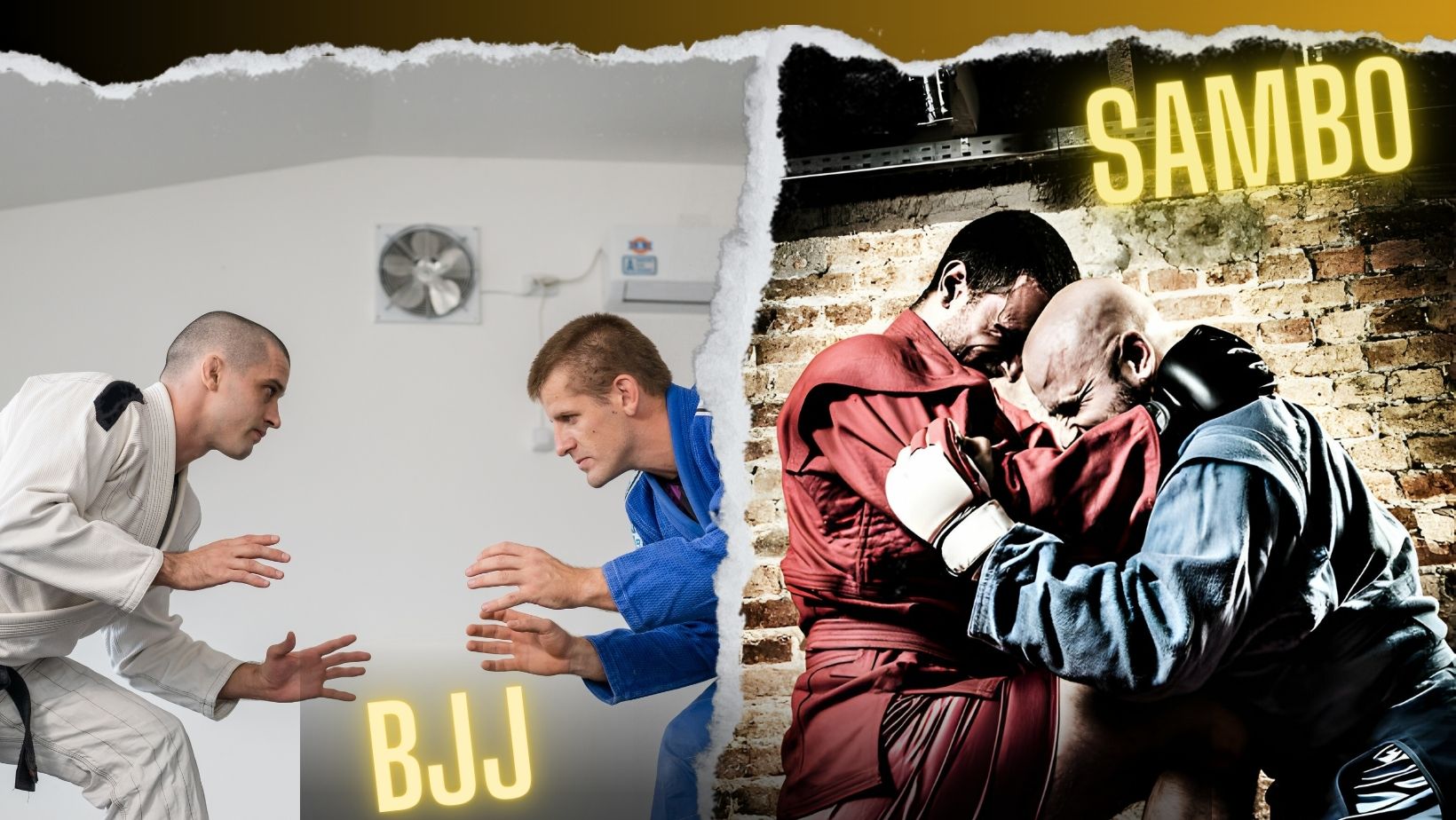

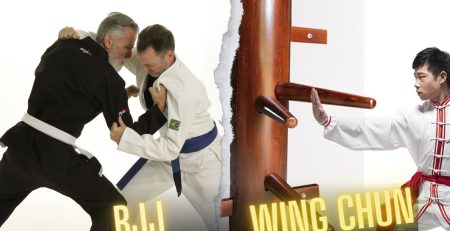
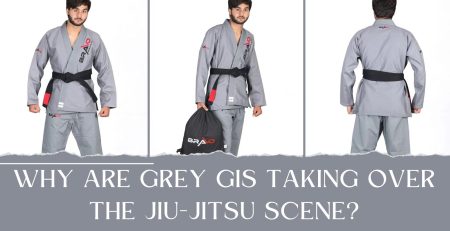
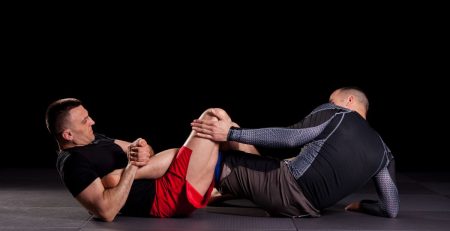
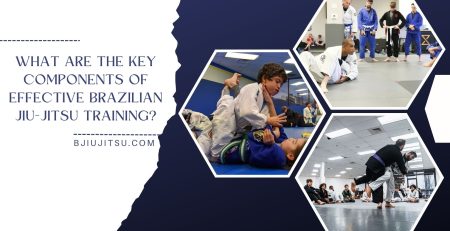

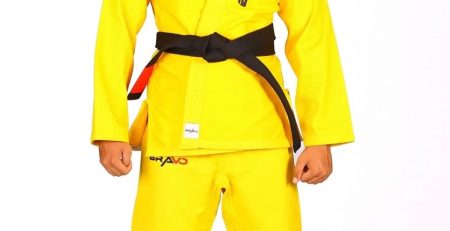
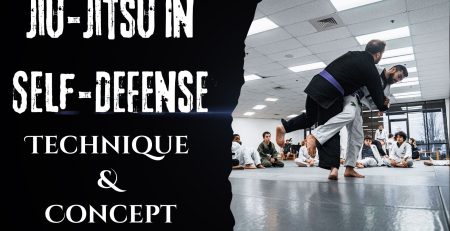
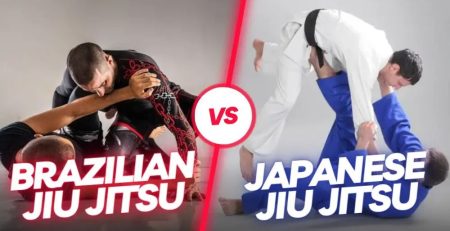
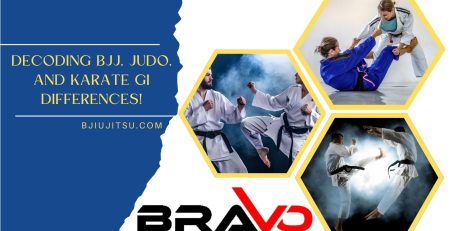
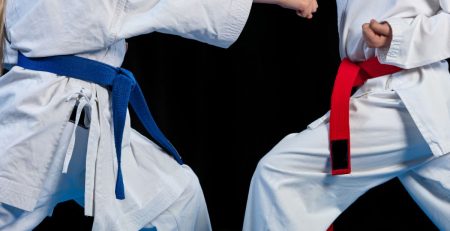

Leave a Reply
You must be logged in to post a comment.